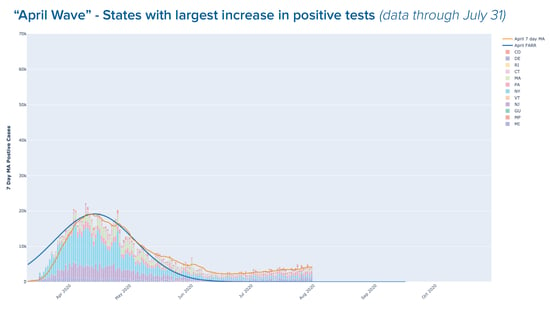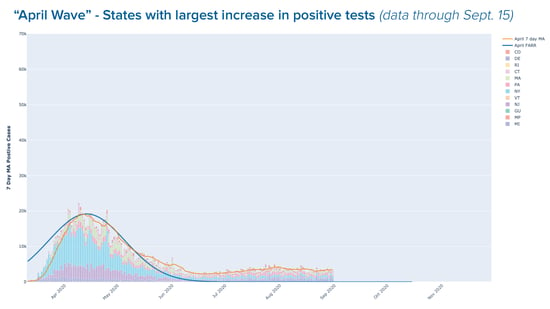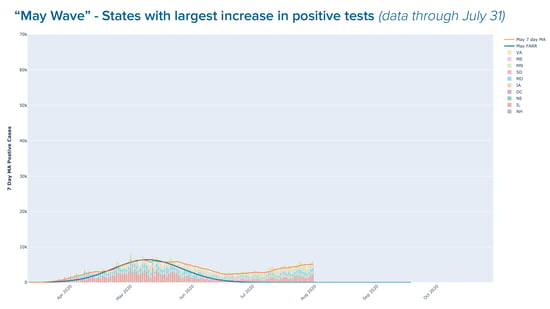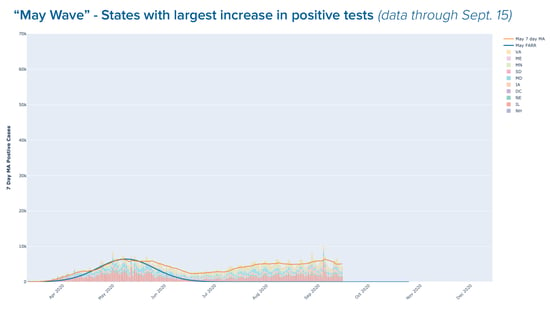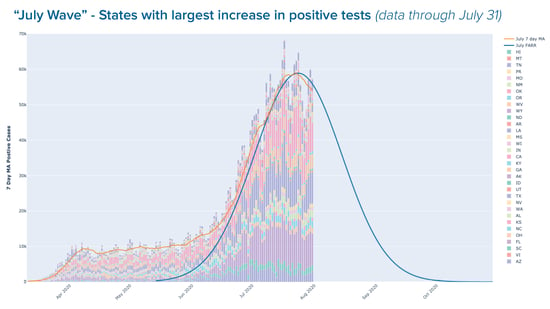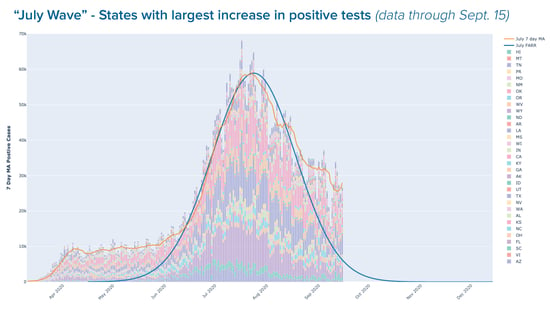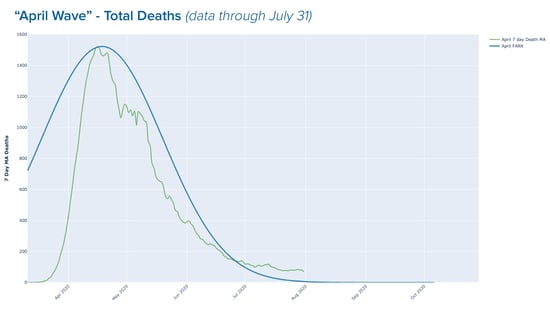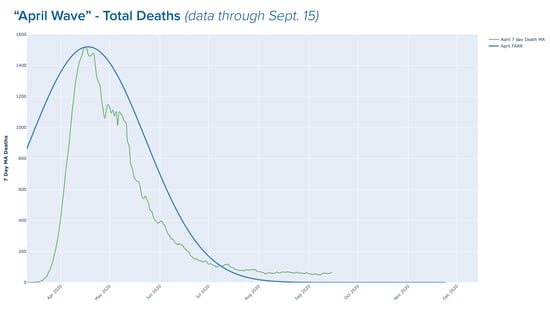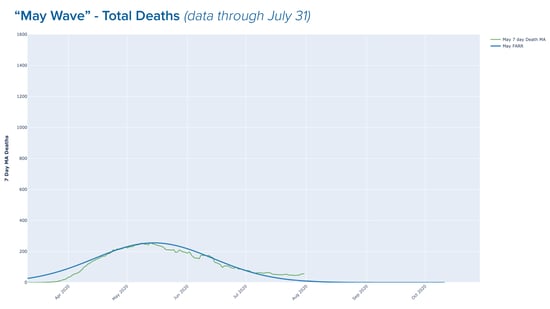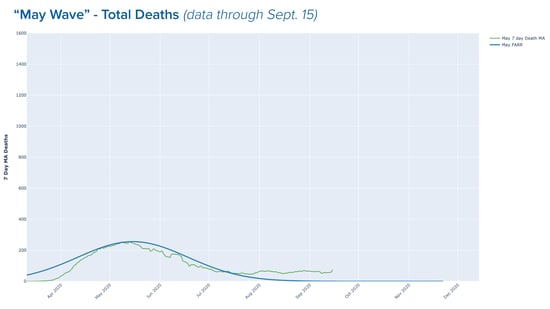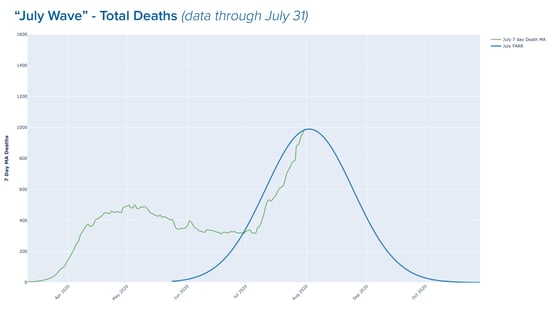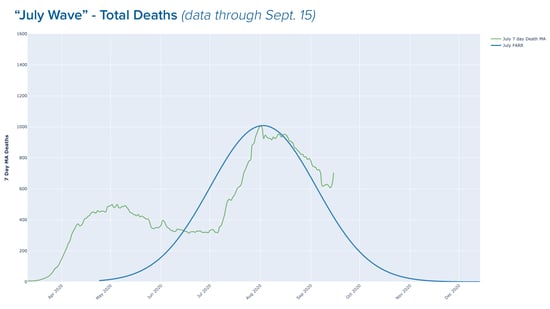'Saturday Night Live', the KFF Health Tracking Poll, and Farr’s Law of Epidemics
Writer’s block is terrifying with an approaching deadline, which began to concern me as the deadline for this post approached. Perhaps only in 2020 could a writer be given the gift of two completely unrelated events on the same day: the announcement of Saturday Night Live’s season premiere and the fascinating insights in the most recent KFF Health Tracking Poll (the “KFF Poll”), each of which was released on September 10.
Some of the most memorable SNL sketches are about Presidents, and it is certain that the first few weeks of Season 46 will tap the rich vein of material that this election offers. Similarly, the KFF Poll is notable for the data it reports about the election, particularly the extent to which it reveals that COVID-19 has become a political issue.[1]
Of course, viruses are not political, at least not those occurring in nature. According to Harrison’s Principles of Internal Medicine (19th Edition):
“Viruses are obligate intracellular parasites. They consist of a DNA or RNA genome surrounded by protein. They may also have an outer-membrane lipoprotein envelope. Viruses can replicate only within cells, because their nucleic acid does not encode many enzymes necessary for the metabolism of proteins, carbohydrates, or lipids or for the generation of high-energy phosphates. Typically, viral nucleic acids encode messenger RNA and proteins necessary for replicating, packaging, and releasing progeny virus from infected cells.”[2]
According to Harrison’s, coronaviruses such as COVID-19 are “pleomorphic, single-stranded RNA viruses that measure 100-160 nm in diameter”, “infect a wide variety of animal species”, are known for being “difficult to cultivate in vitro” and result in a “systemic illness.”[3] Moreover, “[v]accines have been developed against several animal coronaviruses but not against known human coronavirus.”[4]
What the world knows about COVID-19 today is in many respects no different than what was known in April 2020, including the fact that it disproportionately affects elderly populations and people with more than two comorbid conditions, particularly obesity; that Vitamin D levels, which vary across ethnicities, are clinically relevant; and that children are less impacted by COVID-19 than adults.[5],[6],[7],[8],[9] More importantly, what the world knows about COVID-19 today is not drastically different than what was generally known about coronaviruses prior to the novel strain that is COVID-19. With particles measured in nanometers (1000 nanometers = 1 micron), coronaviruses are too small to see without a specialized microscope and equally difficult to filter.[10]
And so, if William Farr were alive today and a fan of SNL skits about Presidential elections, we suppose that he would be especially fond of the October 8, 1988[11] show in which Vice President George H.W. Bush, played by Dana Carvey, debated Governor Michael Dukakis, played by Jon Lovitz. In light of the vast preponderance of what has been written and telecast and, according to the KFF Poll, believed about COVID-19, we can hear William Farr echoing the words of Governor Dukakis: “I can’t believe I’m losing to this guy.”[12]
As we have previously suggested (see posts from August 3, August 17, and August 31), Farr’s Law suggests that there have been three distinct “outbreaks” of COVID-19 in the United States. The “April Wave” was primarily centered in the Northeastern U.S., Colorado and Michigan; the “May Wave” unfolded in the Upper Midwest and part of the Eastern Seaboard; and the “July Wave” was broadly dispersed throughout the rest of the United States, particularly the Sunbelt. We also noted that the first two “waves” have already tapered off in accordance with Farr’s Law, with the low, but persistent, case positivity in those two regions offering support for the notion that the pandemic is now endemic. [13] Finally, as we first proposed on August 3, if Farr’s Law applies to the “July Wave”, then it is likely to taper off in early October.
Today, we update the data as of September 15:
Is the pandemic behaving precisely as Farr’s Law predicts? No, but it is behaving as we predicted. As noted in our August 17th post, Farr’s law is generally discussed as if external factors hold constant despite the fact, as described by Huang, et al, “[w]hile it may be possible that without human intervention, a solitary outbreak may follow a Gaussian curve, in the modern era of contact suppression, the epidemic curve is shaped by such interventions.”[14] The impact of myriad governmental efforts to flatten the curve has merely postponed cases, which results in a “fatter tail” on the right side of the curve.
To be clear, we believe COVID-19 is a highly contagious virus, and the history of vaccines suggests that it is here to stay. For experienced healthcare executives, this reality is yet another reminder of the Odyssean nature of the job. At the same time, we also believe that history – and data – are important prisms through which to navigate challenging environments.
The recorded history of the world confirms that pandemics do ultimately subside. The question is this: Are you prepared for history to repeat itself? If history repeats itself, Farr’s Law suggests that COVID-19 will predictably, but rather suddenly, subside. Ask yourself, “Do I have the right market intelligence to position my system, hospital or practice for future growth in the next year or five years?” Any strategic plan developed before March 13, 2020 is probably out of date…
Whether or not you believe Farr’s Law, COVID-19 cannot stop time, and 2021 starts in 107 days. Is your system prepared to return to the “new old normal” of a healthcare market with increased competition for a decreasing number of commercially insured patients whose business you desperately need in order to fulfill your mission?
[1] https://www.kff.org/coronavirus-covid-19/report/kff-health-tracking-poll-september-2020/
[2] Kasper, Fauci, Hauser, Longo, Jameson, Loscalzo, editors. Harrison’s Principles of Internal Medicine, 19th Edition, 1178.
[3] Ibid., 1203-1204
[4] Ibid., 1205
[5] https://www.nejm.org/doi/full/10.1056/NEJMOa2001316
[6] https://www.nejm.org/doi/full/10.1056/NEJMe2002387?query=recirc_curatedRelated_article
[7] https://www.cdc.gov/nutritionreport/pdf/Second%20Nutrition%20Report%20Vitamin%20D%20Factsheet.pdf
[8] https://onlinelibrary.wiley.com/doi/full/10.1002/oby.22838
[9] https://jamanetwork.com/journals/jama/fullarticle/2765184
[10] https://www.cdc.gov/coronavirus/2019-ncov/hcp/respirator-use-faq.html
[11] https://www.youtube.com/watch?v=N_01LySbRnY&feature=youtu.be
[12] https://www.youtube.com/watch?v=O7QP9Zqge4s
[13] https://www.sciencedirect.com/science/article/pii/S2666535220300306
[14] https://www.medrxiv.org/content/10.1101/2020.03.28.20046177v3.full.pdf
[15] https://www.youtube.com/watch?v=XVloHiUCKyg






